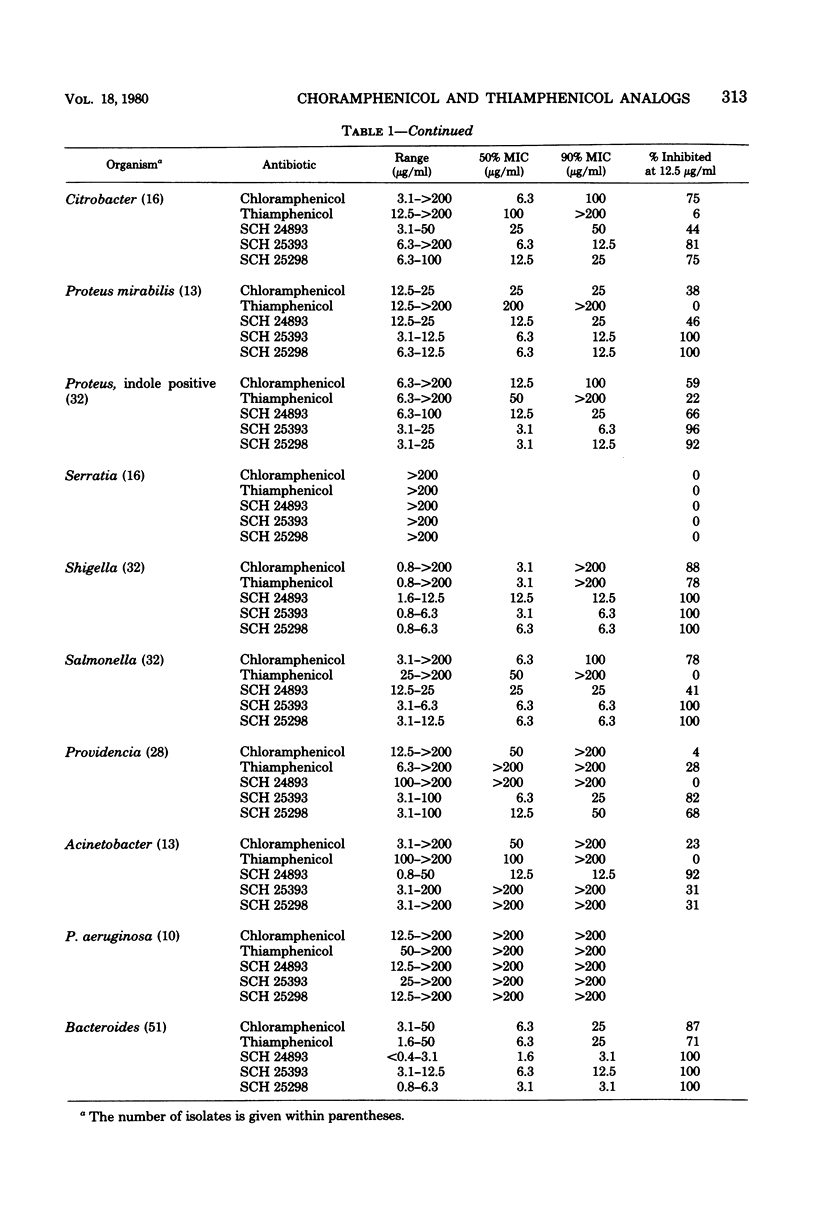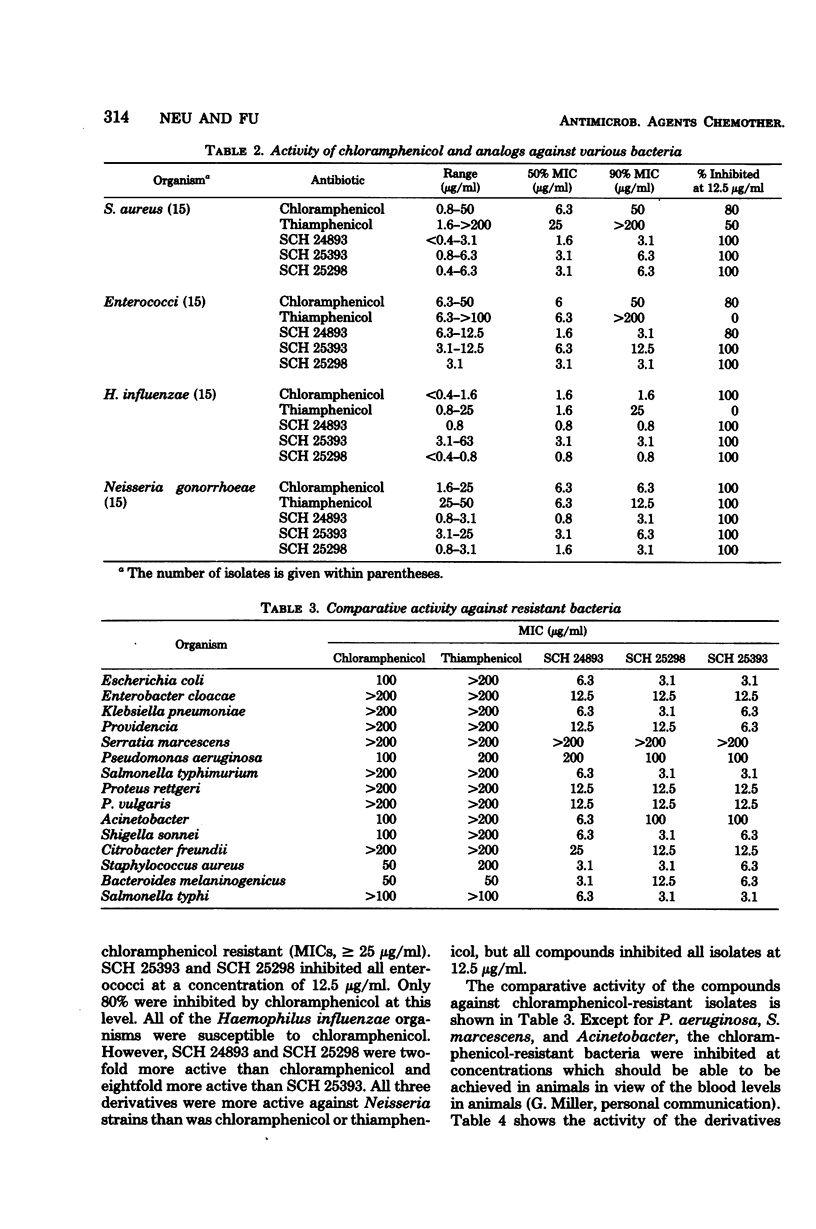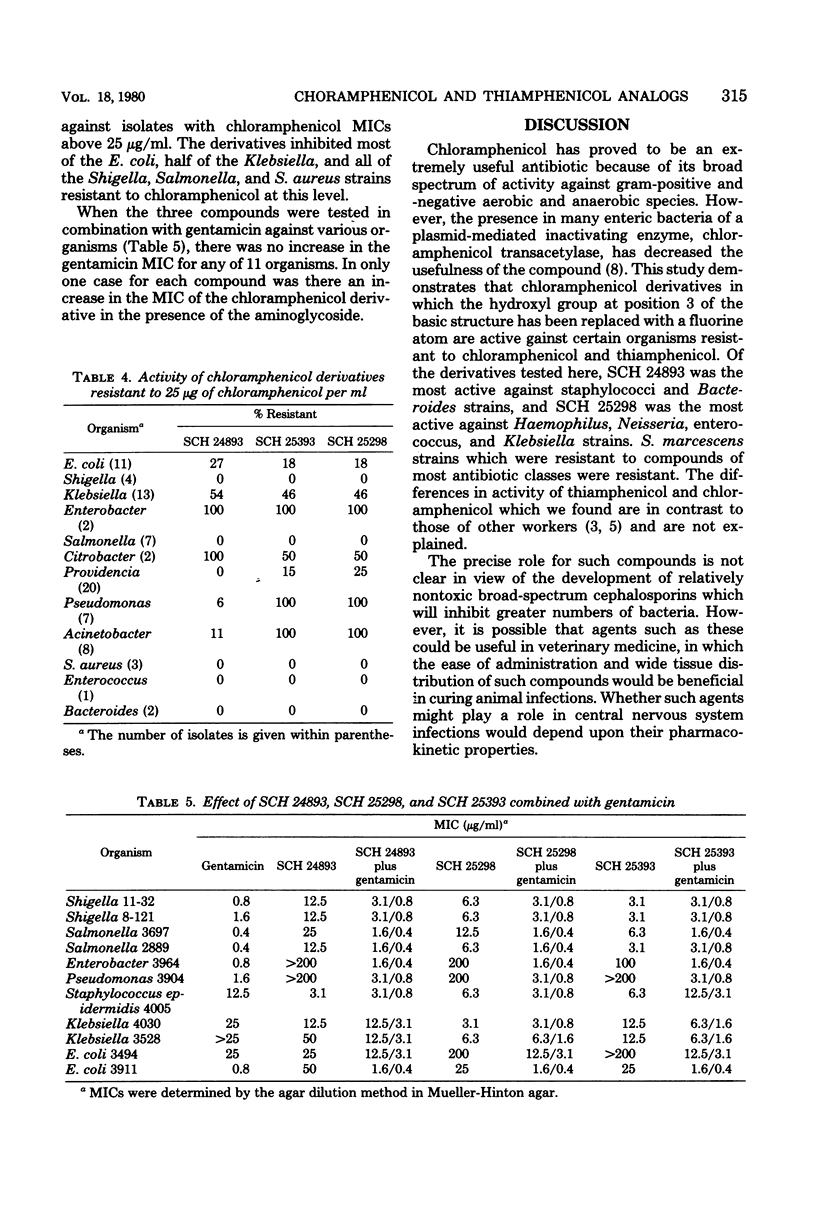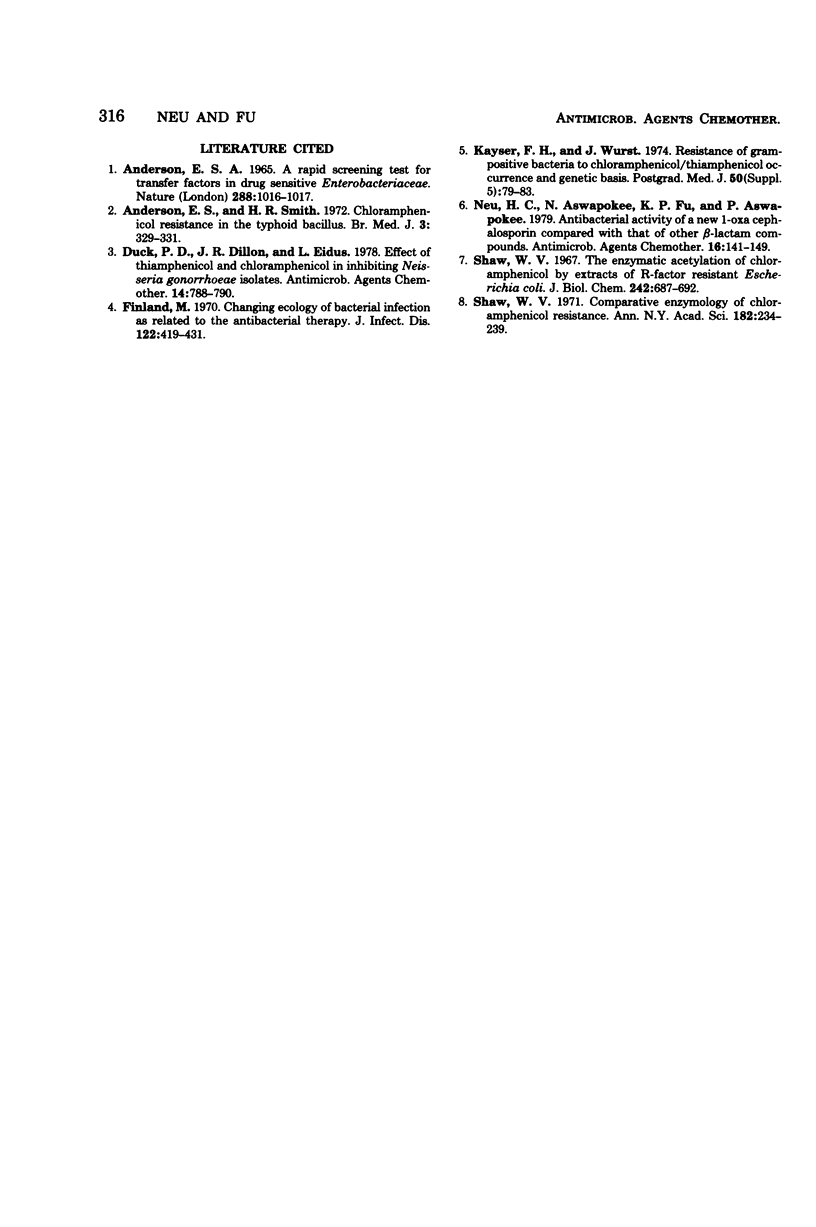Abstract
The in vitro activity of three fluorine analogs of chloramphenicol in which the hydroxyl group at position 3 had been replaced with a fluorine was compared with that of chloramphenicol and thiamphenicol. Compound SCH 24893 was the most active agent against staphylococci and Bacteroides strains, and compound SCH 25298 was the most active against Haemophilus, Neisseria, enterococcus, and Klebsiella strains. Serratia marcescens and Pseudomonas aeruginosa strains resistant to chloramphenicol were resistant to the compounds. The agents inhibited all of the Shigella, Salmonella, Staphylococcus aureus, and enterococcus strains resistant to chloramphenicol. They inhibited most (82%) of Escherichia coli and half of the Klebsiella pneumoniae strains which were resistant to chloramphenicol. Isolates in which resistance to chloramphenicol was shown to be plasmic mediated and due to chloramphenicol transacetylase were inhibited by all three agents.
Full text
PDF





Selected References
These references are in PubMed. This may not be the complete list of references from this article.
- Anderson E. S. A rapid screening test for transfer factors in drug-sensitive Enterobacteriaceae. Nature. 1965 Dec 4;208(5014):1016–1017. doi: 10.1038/2081016a0. [DOI] [PubMed] [Google Scholar]
- Anderson E. S., Smith H. R. Chloramphenicol resistance in the typhoid bacillus. Br Med J. 1972 Aug 5;3(5822):329–331. doi: 10.1136/bmj.3.5822.329. [DOI] [PMC free article] [PubMed] [Google Scholar]
- Duck P. D., Dillon J. R., Eidus L. Effects of thiamphenicol and chloramphenicol in inhibiting Neisseria gonorrhoeae isolates. Antimicrob Agents Chemother. 1978 Nov;14(5):788–790. doi: 10.1128/aac.14.5.788. [DOI] [PMC free article] [PubMed] [Google Scholar]
- Finland M. Changing ecology of bacterial infections as related to antibacterial therapy. J Infect Dis. 1970 Nov;122(5):419–431. doi: 10.1093/infdis/122.5.419. [DOI] [PubMed] [Google Scholar]
- Kayser F. H., Wüst J. Resistance of Gram-positive bacteria to chloramphenicol/thiamphenicol: occurrence and genetic basis. Postgrad Med J. 1974 Oct;50 (Suppl 5):79–83. [PubMed] [Google Scholar]
- Neu H. C., Aswapokee N., Fu K. P., Aswapokee P. Antibacterial activity of a new 1-oxa cephalosporin compared with that of other beta-lactam compounds. Antimicrob Agents Chemother. 1979 Aug;16(2):141–149. doi: 10.1128/aac.16.2.141. [DOI] [PMC free article] [PubMed] [Google Scholar]
- Shaw W. V. The enzymatic acetylation of chloramphenicol by extracts of R factor-resistant Escherichia coli. J Biol Chem. 1967 Feb 25;242(4):687–693. [PubMed] [Google Scholar]
- Shaw W. V. The problems of drug-resistant pathogenic bacteria. Comparative enzymology of chloramphenicol resistance. Ann N Y Acad Sci. 1971 Jun 11;182:234–242. doi: 10.1111/j.1749-6632.1971.tb30660.x. [DOI] [PubMed] [Google Scholar]


